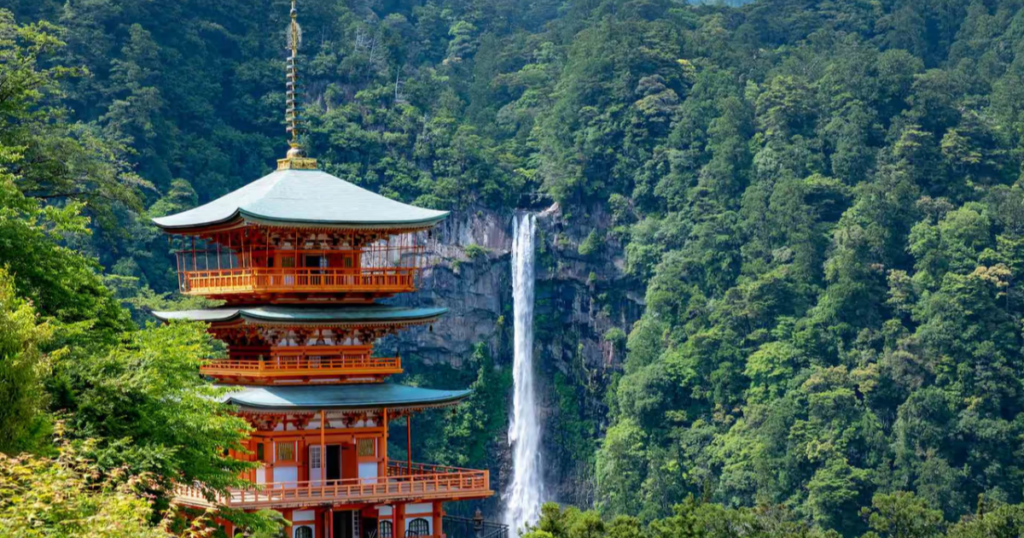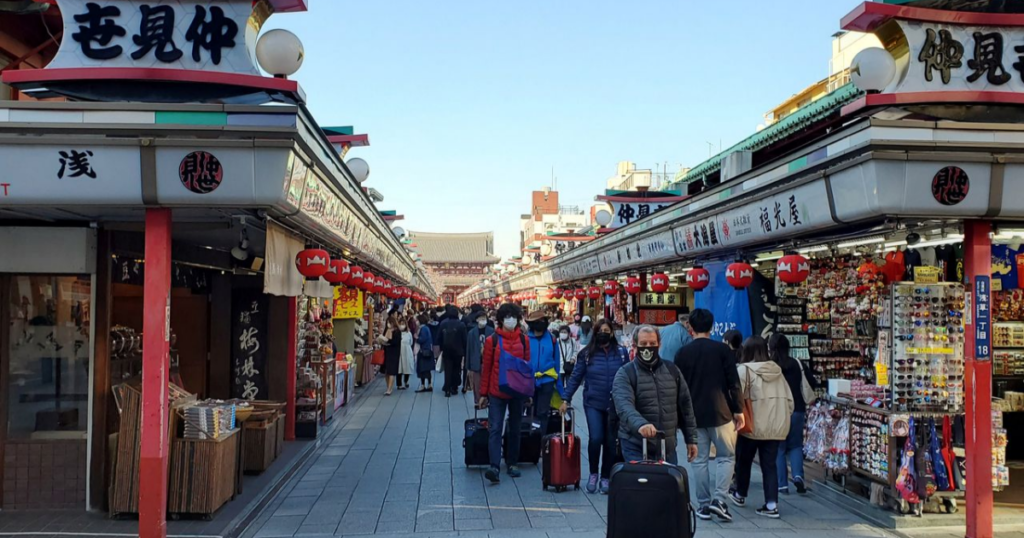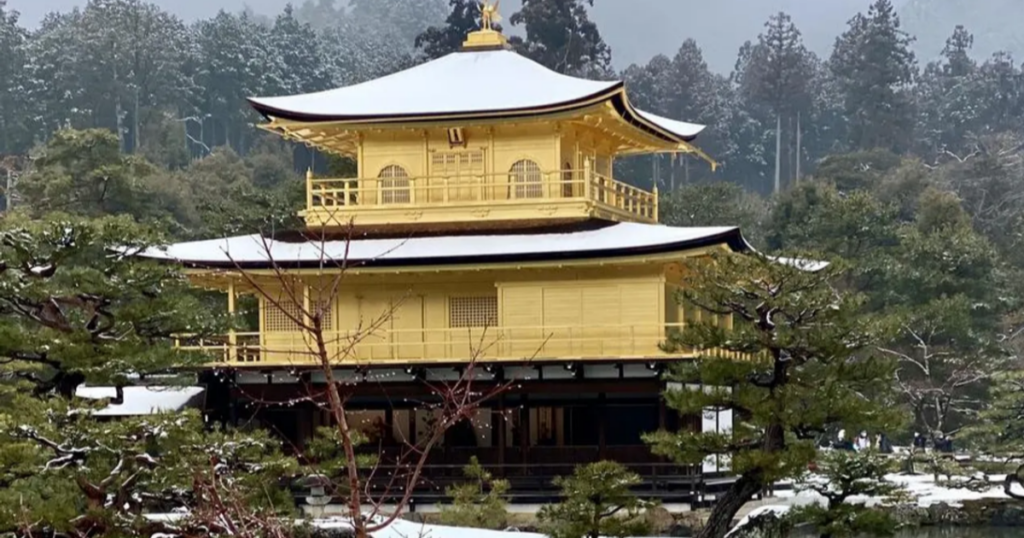Japan Travel Destination
Japan, an island nation in East Asia, is a country of fascinating contrasts. With a rich and ancient history that coexists seamlessly with ultra-modern technology and design, Japan offers visitors a unique and unforgettable experience. From the bustling city streets of Tokyo to the serene temples of Kyoto, Japan is a land of contrasts that is sure to captivate and inspire. Whether you’re interested in traditional arts and crafts, cutting-edge fashion and cuisine, or simply immersing yourself in a rich and complex culture, Japan has something to offer everyone. So come along on a journey to this remarkable country and discover all that Japan has to offer.
Also Read 15 Landmarks To Visit Before You Turn 65

Japan’s History Overview
Japan has a rich and complex history that spans thousands of years, from its earliest prehistoric settlements to the present day. This history can be divided into several distinct periods, each marked by significant social, political, and cultural changes.
• Prehistoric Period (c. 14,000 BCE – 300 BCE)
Japan’s prehistoric period is marked by the development of distinctive Jomon and Yayoi cultures. The Jomon people were hunter-gatherers who lived in small, decentralized communities and created intricate pottery designs. The Yayoi people were farmers who arrived in Japan around 300 BCE and brought with them rice cultivation, metalworking, and a social hierarchy based on clans and tribes.
• Classical Period (300 BCE – 794 CE)
During the classical period, Japan’s imperial court was established in the city of Nara, and the country saw the rise of Buddhism and Confucianism. The Yamato clan gained political dominance and established the first permanent capital in Japan in 710 CE in the city of Nara. However, the capital was later moved to Kyoto in 794 CE, marking the beginning of the Heian period.
• Heian Period (794-1185 CE)
The Heian period is considered a golden age of Japanese culture, marked by the flourishing of arts, literature, and philosophy. The period was also characterized by a highly centralized government and strict social hierarchy, with the imperial court at the top and powerful regional clans beneath them.
• Feudal Period (1185-1603 CE)
The feudal period began with the rise of the samurai warrior class and the establishment of a feudal system of governance. During this time, Japan was ruled by powerful daimyo lords, and the country was divided into competing regions. The period saw many wars, including the Onin War in 1467, which marked the beginning of the Warring States period. This period ended with the unification of Japan under the leadership of Tokugawa Ieyasu in 1603.
• Edo Period (1603-1868 CE)
The Edo period saw a long period of peace and stability, with the establishment of the Tokugawa shogunate and the relocation of the capital to Edo (now Tokyo). The period was marked by the development of a distinct urban culture, including kabuki theater and ukiyo-e woodblock prints. However, the period also saw the closing of Japan to foreign influence, known as the Sakoku policy, which lasted until the mid-19th century.
• Meiji Period (1868-1912 CE)
The Meiji period marked a significant turning point in Japanese history, with the restoration of imperial rule and the end of the shogunate system. The period saw significant modernization and Westernization efforts, including the adoption of a new constitution, the establishment of a modern education system, and the development of industrialization.
• Taisho Period (1912-1926 CE)
The Taisho period was marked by a brief period of democracy and liberalism, with the adoption of a new constitution in 1912. However, the period was also marked by economic and political instability, including the Great Kanto Earthquake of 1923.
• Showa Period (1926-1989 CE)
The Showa period was marked by significant political and social upheaval, including Japan’s involvement in World War II and the post-war occupation by Allied forces. The period also saw significant economic growth and development, known as the “Japanese Miracle,” with Japan becoming the world’s second-largest economy by the 1980s.
• Heisei Period (1989-2019 CE)
The Heisei period saw significant economic stagnation and social challenges, including the aging of the population and a decline in birth rates. The period was also marked by the Great Hanshin-Awaji Earthquake in 1995 and the Fukushima nuclear disaster in 2011.
• Reiwa Period (2019-Present)
The Reiwa period began in 2019 with the ascension of Emperor Naruhito to the Chrysanthemum Throne. The period has been marked by ongoing challenges, including the COVID-19 pandemic and the postponement of the 2020 Olympic Games. The period also saw the abdication of Emperor Akihito in 2019, marking the first imperial abdication in over two centuries.
Today, Japan is a modern and prosperous country with a rich cultural heritage and a unique blend of traditional and contemporary elements. Its history continues to shape its present, as the country faces new challenges and opportunities in an ever-changing global landscape.
Table of Contents

Follow us on Youtube
Follow us on Facebook
Follow us on Twitter
Follow us on Instagram
Japan’s Culture And Tradition
Japan’s culture and tradition are steeped in a rich history that has been shaped by centuries of artistic, philosophical, and religious influences. From its early Shinto roots to its modern-day pop culture, Japan has developed a unique and multifaceted culture that is admired and celebrated around the world.
• Religion and Spirituality
Shintoism and Buddhism are the two dominant religions in Japan, with many people practicing a combination of the two. Shintoism is the indigenous religion of Japan and is characterized by a reverence for nature, ancestors, and the kami (gods or spirits). Buddhism, which was introduced to Japan in the 6th century, emphasizes self-improvement, meditation, and the pursuit of enlightenment.
• Art and Literature
Japan has a long and rich artistic tradition that includes painting, calligraphy, sculpture, and architecture. One of the most notable Japanese art forms is ukiyo-e, a style of woodblock printing that was popular from the 17th to the 19th century. Japanese literature is also highly regarded, with classic works such as The Tale of Genji by Murasaki Shikibu and The Pillow Book by Sei Shonagon.
• Cuisine
Japanese cuisine is renowned for its freshness, simplicity, and attention to detail. Traditional Japanese meals typically include rice, soup, pickled vegetables, and fish or meat dishes. Sushi, sashimi, and tempura are among the most well-known Japanese dishes and are enjoyed around the world. Japanese tea ceremonies are also an important part of Japanese culture, with the preparation and presentation of tea considered an art form in itself.
• Fashion
Japan has a distinct fashion culture that has become increasingly popular around the world. Traditional Japanese clothing includes the kimono and yukata, while contemporary fashion in Japan is characterized by bold colors, avant-garde designs, and a focus on youth culture. Japanese street fashion, particularly in the Harajuku neighborhood of Tokyo, is known for its eclectic and creative styles.
• Music and Dance
Traditional Japanese music is characterized by the use of instruments such as the koto, shamisen, and taiko drum. Kabuki and noh theater are traditional forms of Japanese dance and drama, featuring elaborate costumes and stylized movements. Modern Japanese music includes J-pop, rock, and hip-hop, and has gained popularity both within Japan and around the world.
• Sports and Recreation
Sumo wrestling is Japan’s national sport and is deeply rooted in Japanese culture and tradition. Other popular sports in Japan include baseball, soccer, and martial arts such as judo, karate, and kendo. Japanese gardens, such as the famous Zen gardens, are also an important part of Japanese culture and are renowned for their simplicity, elegance, and symbolism.

Top Places And Landmarks to be visited in Japan
Japan is a country that is rich in culture and history, with a plethora of natural wonders and iconic landmarks. Here are some of the top places and landmarks to visit in Japan:
1) Tokyo: The bustling capital of Japan is a must-visit for any traveler. Tokyo is famous for its bustling streets, modern architecture, and world-renowned food scene.
2) Kyoto: The ancient capital of Japan, Kyoto is home to countless temples, shrines, and gardens, including the iconic Kinkaku-ji (Golden Pavilion) and Fushimi Inari Shrine.
3) Mount Fuji: The tallest mountain in Japan, Mount Fuji is a symbol of the country and a UNESCO World Heritage site. Climbing to the summit is a popular activity for many visitors.
4) Hiroshima Peace Memorial Park: A powerful reminder of the devastation of war, the Hiroshima Peace Memorial Park is a moving tribute to the victims of the atomic bombing of Hiroshima in 1945.
5) Himeji Castle: Known as the “White Heron Castle” due to its striking white exterior, Himeji Castle is one of the best-preserved castles in Japan and a UNESCO World Heritage site.
6) Nara: One of the oldest cities in Japan, Nara is famous for its ancient temples, including Todai-ji Temple and Kasuga-taisha Shrine. The city is also home to hundreds of deer that roam freely through its streets and parks.
7) Miyajima Island: Located just off the coast of Hiroshima, Miyajima Island is home to the iconic Itsukushima Shrine, which appears to float on the water at high tide.
8) Tokyo Tower: A symbol of Tokyo, the Tokyo Tower offers panoramic views of the city and is illuminated at night in a stunning display of colors.
9) Osaka Castle: One of the most famous landmarks in Osaka, Osaka Castle is a magnificent 16th-century castle that has been beautifully restored and is surrounded by a picturesque park.
10) Nikko National Park: Known for its stunning natural beauty, Nikko National Park is home to a number of breathtaking waterfalls, scenic lakes, and hot springs, as well as the famous Toshogu Shrine.
These are just a few of the many amazing places and landmarks that Japan has to offer. Whether you’re interested in history, nature, or modern culture, Japan has something to offer every traveler.
A Short Summary of The Article
Japan is a fascinating country that is known for its unique blend of ancient traditions and modern culture. Its rich history, art, and cuisine, as well as its technological advancements, make it an interesting and exciting destination for travelers from all over the world.
Japan’s people are known for their politeness, discipline, and dedication to their work, which has contributed to the country’s economic success and global influence. At the same time, Japan’s culture is deeply rooted in spirituality, with a reverence for nature, ancestors, and the divine.
Despite its relatively small size, Japan is home to a diverse array of landscapes and natural wonders, from the towering Mount Fuji to the idyllic beaches of Okinawa. The country is also famous for its efficient transportation system, including its bullet trains, which make it easy to travel between cities and regions.
Japan is a country that is steeped in history and culture, yet at the same time, is forward-thinking and innovative. Its unique blend of old and new, combined with its stunning landscapes, delicious cuisine, and welcoming people, make it a destination that is not to be missed.
Do Let us know what you think about our take on Japan. Also mention of we missed anything would be interesting to have a chat on it.

